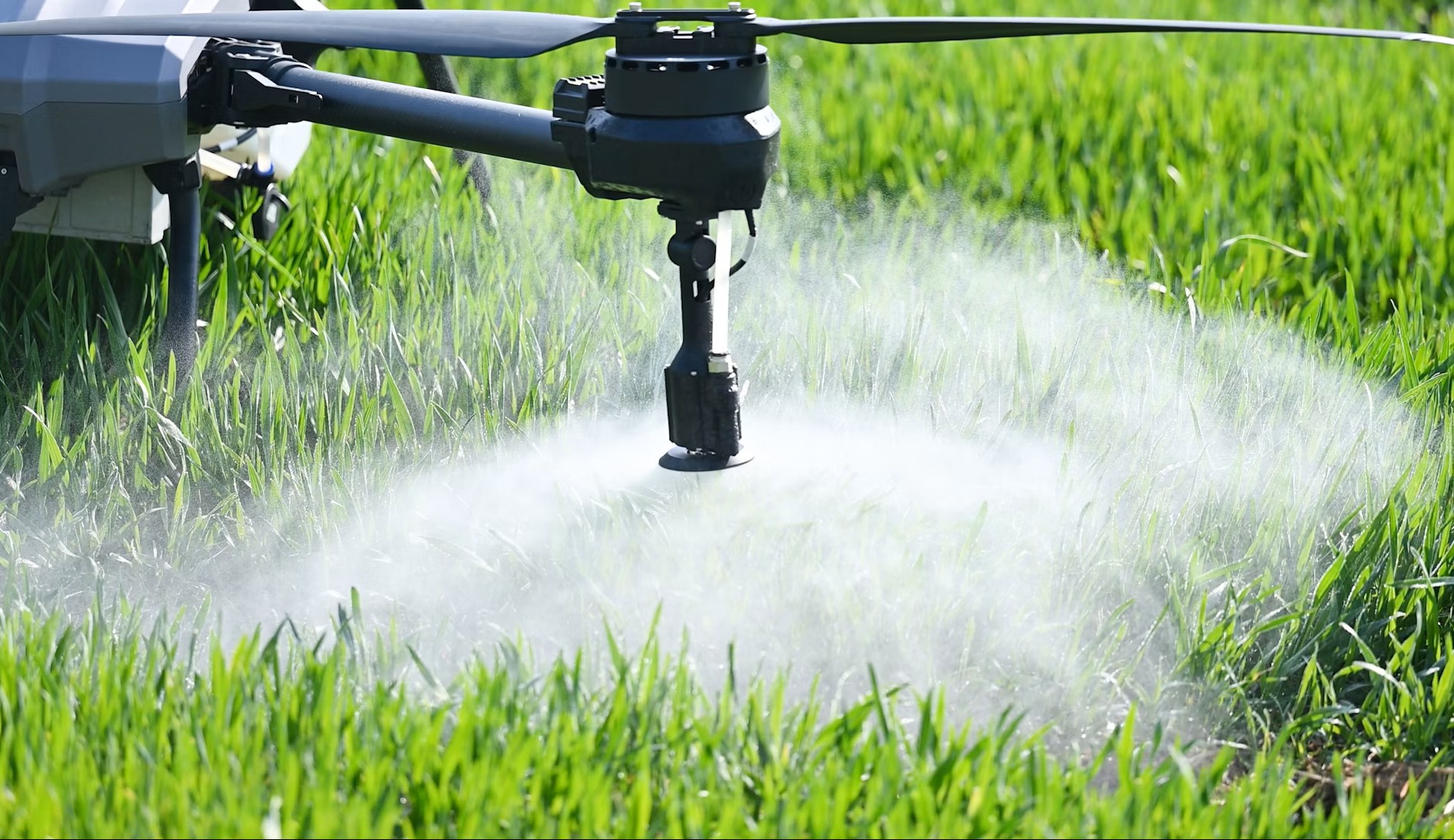Humates are naturally occurring organic materials primarily sourced from leonardite, a soft, coal-like substance formed from ancient peat deposits through millions of years of geological processes involving heat and pressure. These materials are rich in humic substances, including humic acid, fulvic acid, and humin, which are integral components of soil humus. Unlike traditional fertilizers that directly supply nutrients, humates function as soil conditioners, enhancing the soil environment to maximize the effectiveness of applied fertilizers. By improving nutrient availability, soil structure, and microbial activity, humates play a critical role in sustainable agriculture, supporting both crop productivity and environmental health.
Composition and Sources
Humates are predominantly derived from leonardite, found in lignite coal deposits, though they can also be extracted from peat, compost, or other organic-rich materials. The primary active components include:
- Humic Acid: A high-molecular-weight compound that enhances soil structure and nutrient retention.
- Fulvic Acid: A lower-molecular-weight compound that is highly soluble and facilitates nutrient uptake by plants.
- Humin: A stable, insoluble fraction that contributes to long-term soil organic matter.
These substances are naturally present in fertile soils but are often depleted in intensively farmed or degraded lands. Commercial humate products are processed into granular, powdered, or liquid forms for ease of application in agricultural settings.
Role in Fertilizer Amendment
Humates are not fertilizers themselves but are used as amendments to enhance the performance of fertilizers, whether synthetic or organic. They can be incorporated directly into fertilizer blends, applied simultaneously with fertilizers, or used as standalone soil conditioners. By improving the soil’s capacity to retain and deliver nutrients, humates reduce nutrient loss through leaching or volatilization, making fertilization more efficient and environmentally sustainable. They are particularly valuable in precision agriculture, where optimizing inputs is critical for economic and ecological outcomes.
Detailed Benefits of Humates in Fertilizer Programs
The integration of humates into fertilizer amendments provides multiple benefits, supported by extensive agricultural research and field observations:
- Enhanced Nutrient Availability and Efficiency:
- Humates act as natural chelating agents, binding to essential nutrients such as nitrogen, phosphorus, potassium, and micronutrients (e.g., iron, zinc, and manganese). This prevents nutrients from becoming immobilized in the soil, ensuring they remain accessible to plant roots.
- By improving nutrient uptake, humates allow farmers to reduce fertilizer application rates without compromising crop yields, lowering input costs and minimizing environmental impact.
- Improved Soil Structure and Water Retention:
- Humates promote the formation of soil aggregates, which enhance soil porosity, aeration, and drainage. This is particularly beneficial in clay soils, where compaction is a challenge, and sandy soils, where water retention is poor.
- The increased water-holding capacity of humate-amended soils reduces irrigation needs and improves plant resilience during drought conditions.
- Stimulation of Soil Microbial Activity:
- Humates serve as a carbon source for beneficial soil microorganisms, including bacteria, fungi, and actinomycetes. These microbes contribute to nutrient cycling, organic matter decomposition, and the suppression of soil-borne pathogens.
- Enhanced microbial activity fosters symbiotic relationships, such as those between plants and mycorrhizal fungi, which improve nutrient absorption and plant vigor.
- Increased Plant Resilience:
- Plants grown in humate-amended soils exhibit stronger root systems, improved seed germination, and greater tolerance to environmental stresses, including salinity, extreme pH, temperature fluctuations, and heavy metal toxicity.
- Humates stimulate the production of plant hormones and enzymes, promoting overall growth and resilience.
- Weed and Disease Suppression:
- Healthier soils and plants resulting from humate use create a competitive environment that naturally suppresses weed growth.
- The stimulation of beneficial microbes can reduce the incidence of soil-borne diseases, decreasing reliance on chemical pesticides.
- Environmental Benefits:
- By reducing nutrient leaching, humates help prevent contamination of groundwater and surface water, mitigating issues like eutrophication.
- Their use supports sustainable farming practices by improving long-term soil fertility and reducing the carbon footprint of agricultural operations.
Application Methods and Guidelines
Humates are versatile and can be applied in various forms to suit different agricultural systems, including field crops, horticulture, turf management, and greenhouse production:
| Form | Application Rate (per 1,000 sq ft) | Frequency | Application Method |
|---|---|---|---|
| Granular | 5–15 lbs | 1–2 times per year | Broadcast and incorporate into soil; mix with granular fertilizers for even distribution. |
| Liquid | 1–3 oz per gallon of water | Every 2–4 weeks or with irrigation | Apply as a soil drench or foliar spray; compatible with liquid fertilizers. |
| Powdered | 10–20 lbs (incorporated into soil) | At planting or as needed | Mix into potting soils or apply during soil preparation; dissolves quickly in water. |
- Timing: Humates can be applied before planting, during the growing season, or as part of soil remediation efforts. They are stable across a wide pH range (6–12), making them suitable for diverse soil types.
- Compatibility: Humates are compatible with most fertilizers, including nitrogen-based, phosphorus-based, and organic formulations. They can also be combined with compost or other organic amendments to enhance effects.
- Soil Testing: Prior to application, soil testing is recommended to assess organic matter levels, nutrient status, and pH. This allows for tailored application rates to maximize benefits.
- Specialized Uses: In addition to agriculture, humates are used in bioremediation to detoxify contaminated soils, leveraging their surfactant properties to bind heavy metals and pollutants.
Practical Considerations
- Soil Type Variability: The efficacy of humates varies depending on soil characteristics. Sandy soils benefit from improved water and nutrient retention, while clay soils see enhanced aeration and reduced compaction. In soils with high organic matter, humate effects may be less pronounced but still beneficial.
- Organic Certification: Many humate products are approved for organic farming (e.g., OMRI-listed), making them suitable for organic production systems.
- Cost-Effectiveness: While humates add to input costs, their ability to reduce fertilizer and water use often results in net savings. Over-application is generally safe, but adhering to recommended rates ensures economic efficiency.
- Storage and Handling: Humates are non-toxic and stable, requiring only standard storage conditions (cool, dry environments). Liquid formulations should be agitated before use to ensure uniformity.
Limitations and Challenges
While humates offer significant benefits, their effects are not immediate and may take weeks to manifest, particularly in heavily degraded soils. The quality of humate products varies, with leonardite-derived humates generally being more effective than those from lower-grade sources. Farmers should source products from reputable suppliers and verify humic and fulvic acid content through product labeling or third-party analysis. Additionally, while humates enhance fertilizer efficiency, they cannot fully replace nutrient inputs in nutrient-deficient soils.
Conclusion
Humates are a powerful tool in modern agriculture, serving as effective fertilizer amendments that enhance nutrient uptake, improve soil health, and promote sustainable farming practices. By integrating humates into fertilizer programs, farmers can achieve higher yields with reduced inputs, improve plant resilience, and contribute to environmental conservation. Their versatility, compatibility with various fertilizers, and long-term benefits make them a valuable asset across diverse agricultural systems.









